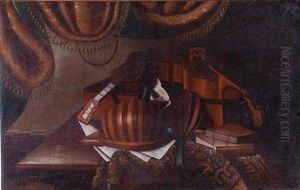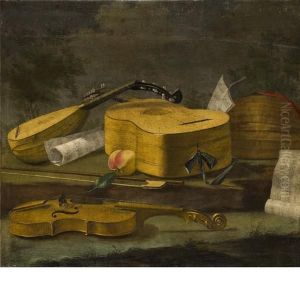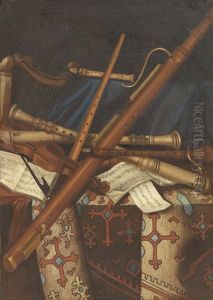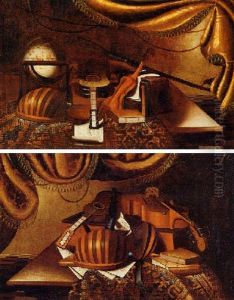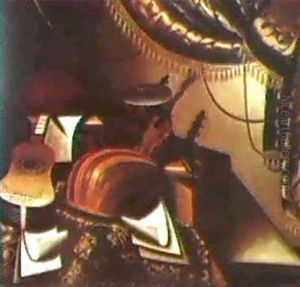Bonaventura Bettera Paintings
Bonaventura Bettera was an Italian painter known primarily for his still life works, active during the Baroque era. Born in 1639 in Milan, Bettera's work is often characterized by its meticulous attention to detail and the vibrant realism he brought to the depiction of inanimate objects, particularly musical instruments, books, and other elements that suggest a cultured and scholarly environment. His paintings often include rich textures, reflective surfaces, and a masterful use of light and shadow, which suggests that he was influenced by the naturalistic trends in Lombard painting at the time.
There is limited documentation on Bettera's life and training, which is not uncommon for artists of his period, especially those who specialized in still life. Despite this, his works have been recognized for their quality and contribution to the genre of still life. He is often associated with other still life painters of the Milanese school, such as Evaristo Baschenis and Bartolomeo Bettera, the latter of which may have been a relative, possibly his brother, although the exact relationship is unclear.
Bettera's paintings were typically composed with remarkable care, often depicting arrangements of musical instruments, such as lutes, violins, and recorders, alongside other objects like books, manuscripts, and scientific instruments. These items were not only rendered with high fidelity but also arranged in a way that reflected the Baroque era's love of complexity, drama, and a sense of momentary stillness in a dynamic world.
Bonaventura Bettera's work provides an intimate glimpse into the intellectual life of his era, and his paintings were likely appreciated by a clientele that valued music, knowledge, and the arts. His death is recorded in 1688, and while he may not have achieved the same level of fame as some of his contemporaries, his legacy persists through the delicate beauty and technical skill evident in his surviving works.
